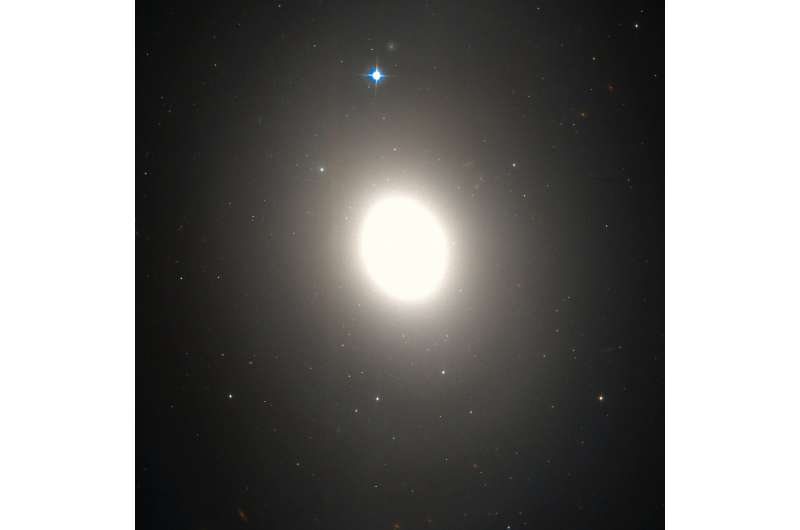Messier 85 galaxy by Hubble Space Telescope. Credit: NASA/STScI/WikiSky.
Astronomers have conducted a study of stellar population and kinematics of globular clusters (GCs) in the galaxy Messier 85, and found that this galaxy hosts a peculiar globular cluster system. The finding is reported in a paper published October 6 on the arXiv pre-print repository.
Located some 60 million light years away from the Earth, Messier 85 (or M85, also known as NGC 4382) has a complex outer structure with shells and ripples, thought to be a result of a merger with another galaxy. It is estimated that this merger took place between 4 and 7 billion years ago.
However, due to the observed merger remnant features, many properties of M85 still remain uncertain, like its morphological type. In order to better understand M85, many studies of its central region have been performed, but few have investigated its outskirts.
So a team of astronomers led by Youkyung Ko of the Korea Astronomy and Space Science Institute in Daejeon, South Korea, used GCs in M85 to explore the galaxy's halo. They employed the MMT Observatory in Arizona to carry out a wide-field spectroscopic survey of the GCs with the aim of investigating the physical properties of these clusters in the outskirts of M85.
"We present a spectroscopic study of GCs in the merger remnant galaxy M85 using the MMT/Hectospec," the astronomers wrote in the paper.
The researchers identified 89 GCs based on the radial velocity measurements and divided them into three groups according to their colors—blue (BGC), green (GGC) and red (RGC). While all the subpopulations were found to be around 10 billion years old, it turned out that they showcase notable differences in their spatial distribution, kinematics and mean metallicities.
The systemic velocity of M85 was measured to be about 696 km/s, while mean radial velocities of BGC, GGC and RGC were found to be higher, at a level of 727, 812 and 704, respectively. RGC has the highest mean metallicity out of the three groups, estimated to be approximately -0.45. The remaining two, BGC and GGC, have mean metallicities of about -1.49 and -0.91, respectively.
The astronomers concluded that the differences in the kinematics of the three GC groups suggest that they formed and evolved differently. It was noted that the BGCs in M85 have kinematic properties and metallicities similar to those in other early-massive galaxies. However, they note that the other two globular cluster groups have peculiar kinematics that cannot be explained by the typical GC formation scenarios.
"The GGCs may be a population accreting to or escaping from the M85 plane, and the RGCs may be a remnant produced by recent off-center major merging events," the authors of the paper explained.
They added that further studies of kinematics and spatial distribution are required to better understand the origin of GGCs and RGCs in M85.
More information: Ko et al., Mysterious Globular Cluster System of the Peculiar Massive Galaxy M85. arXiv:2010.03041 [astro-ph.GA]. arxiv.org/abs/2010.03041
© 2020 Science X Network
























